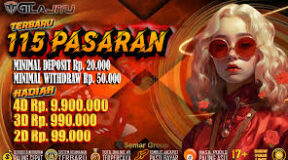When it comes to creating a stimulating and secure environment for infants, liefboefje playmats are indispensable. These colorful, cushioned surfaces are more than just a comfortable spot for babies to play—they offer numerous developmental benefits and safety features that make them a must-have for any nursery. Here’s a comprehensive look at why playmats are so beneficial, how they contribute to a baby’s growth, and what to consider when choosing the perfect one.
Why Playmats Matter
Playmats, also known as activity mats, are designed to provide a safe, clean, and engaging space for babies to explore. They are typically made from soft, durable materials that cushion falls and protect little ones from hard surfaces. The primary reasons playmats are essential include:
- Safety First: Babies are naturally curious and eager to explore their surroundings, which often means rolling, crawling, and even falling. Playmats provide a soft, padded area that can help reduce the impact of falls and protect delicate bones and joints.
- Stimulating Sensory Development: Many playmats feature vibrant colors, different textures, and interactive elements like crinkly fabrics, mirrors, and hanging toys. These features help stimulate a baby’s senses and encourage visual and tactile exploration.
- Encouraging Motor Skills: Playmats offer a designated space where babies can practice rolling, reaching, and crawling. The varied textures and toys can motivate babies to move and stretch, aiding in the development of their motor skills.
- Creating a Clean Play Area: Babies spend a lot of time on the floor, and playmats can help keep that area clean and hygienic. Most playmats are designed to be easily washable, which is a boon for busy parents dealing with spills and messes.
Choosing the Right Playmat
Selecting the ideal playmat involves considering several factors to ensure it meets your baby’s needs and your family’s lifestyle:
- Material Matters: Look for playmats made from non-toxic, hypoallergenic materials. Foam mats are popular for their cushioning and easy maintenance, but be sure they are free from harmful chemicals like phthalates and lead. Organic cotton mats are a great option if you prefer natural materials.
- Size and Portability: Consider the size of the playmat in relation to the space where it will be used. Larger mats offer more room for movement, while smaller, foldable mats are easier to transport and store.
- Design and Features: Opt for a playmat with engaging designs and features. Mats with high-contrast patterns can help with visual development, while those with various textures and interactive elements can stimulate sensory exploration.
- Ease of Cleaning: Babies can be messy, so choose a playmat that is easy to clean. Many playmats are machine washable or come with removable, washable covers.
- Safety Standards: Ensure the playmat adheres to safety standards and is free from harmful substances. Look for certifications or labels indicating that the product meets safety guidelines.
Enhancing Playtime with Playmats
To maximize the benefits of a playmat, consider incorporating other elements into your baby’s playtime routine:
- Tummy Time: Use the playmat as a dedicated space for tummy time, which is crucial for strengthening neck and shoulder muscles and developing motor skills.
- Interactive Toys: Attach or place age-appropriate toys around the playmat to encourage reaching, grasping, and exploring.
- Visual Stimulation: Choose mats with bold patterns and bright colors to capture your baby’s attention and promote visual tracking.
Conclusion
Playmats are more than just a cushioned area for babies to sit and play—they are a vital tool for encouraging development, ensuring safety, and making playtime fun. By selecting the right playmat and incorporating it into your baby’s daily routine, you can create a nurturing environment that supports their growth and well-being. Whether you opt for a brightly colored foam mat or a plush, textured one, the key is to choose a product that meets your baby’s needs and provides a safe space for exploration.





